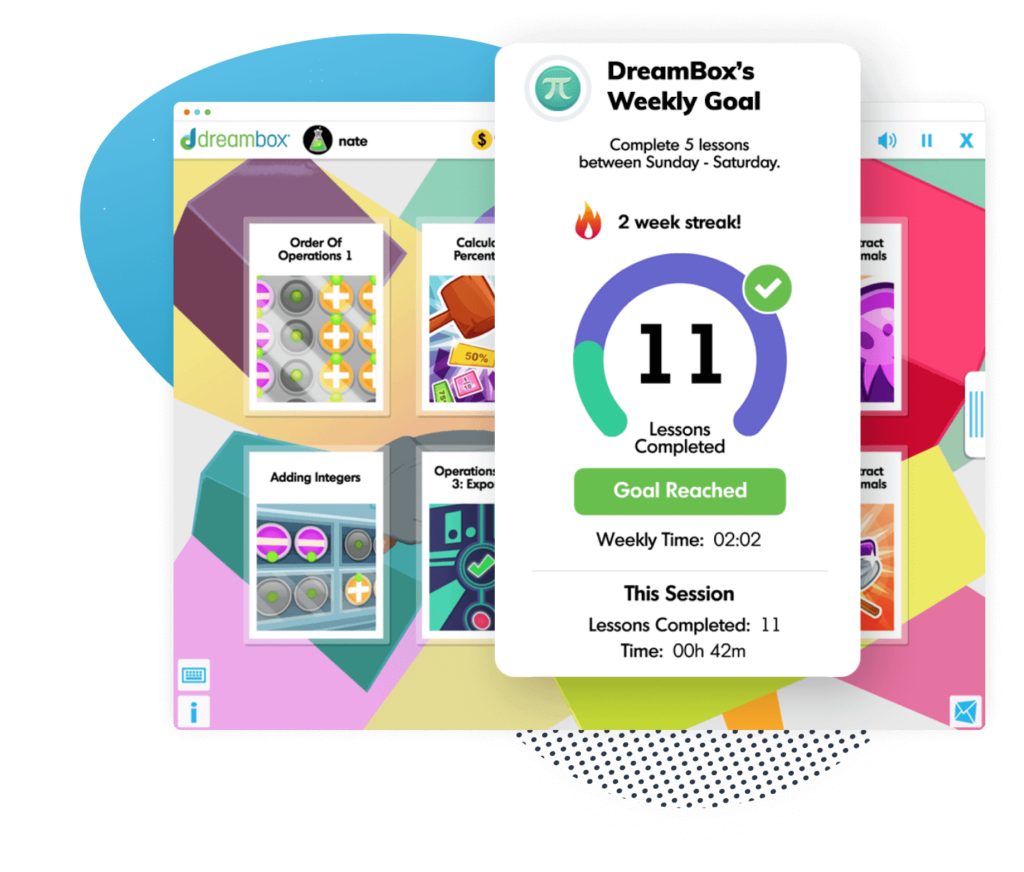Easy Riddles for Kindergarten
Fun and simple riddles that spark curiosity, build thinking skills, and bring joyful learning to kindergarten classrooms.

Author
Katie Wickliff
Published:
July 2025
Key takeaways
- • Riddles engage kids in playful problem solving, which helps make learning fun
- • Riddles develop logical and mathematical thinking necessary for academic success
- • Solving a riddle allows students to practice patience and perseverance
What can a kindergarten classroom make but not see?
Noise!
Riddles like this one might get kids giggling, but they’re more than just simple jokes. Solving riddles can help boost critical thinking skills, improve problem-solving strategies, and spark creativity. Developing these skills supports learning across all subjects, including math, where logical thinking and reasoning are essential for success. Plus, riddles make learning an engaging, playful, and confidence-building experience. In this article, we explore the benefits of riddles for kindergarteners and share plenty of fun examples to solve together.
Benefits of Riddles for Young Minds
In today’s world of instant gratification, most answers are just a click away. While this convenience is great for finding a recipe or confirming an address, it does little to build patience. As an elementary educator, I often spoke with parents and teachers concerned that this easy access to information keeps kids from developing the perseverance to tackle challenging tasks.
In contrast, solving a riddle requires focus and determination, important skills that will help students succeed in the classroom and beyond. In fact, a 2019 study found that incorporating riddles into the classroom helps develop the logical and mathematical thinking skills needed at the high school level.
Introducing riddles in kindergarten is a fantastic way to foster confidence in even the youngest students. Below are some of our favorite riddles–and don’t worry, we’ve included the answers as well! Enjoy!
Easy Riddles for Kindergarteners
Animal Riddles
Kindergarteners spend a great deal of time studying the animal kingdom, so incorporating these riddles into a classroom or homeschool lesson is an easy way to ignite curiosity about the natural world.
1. What do you call a bear with no teeth?
A gummy bear
2. What animal is black, white, and blue?
A sad penguin
3. What animal flies all night but has no feathers?
A bat
4. I have a purple tongue and long, long legs. I may be tall but I am very gentle. What am I?
A giraffe
5. I have four legs and a fluffy tail. I always eat my vegetables! What am I?
A rabbit
6. I am special because I can breathe underwater and also on land. What am I?
A frog
7. What kind of animal jumps when it walks and sits when it stands?
A kangaroo
8. What goes “tick tock” “woof woof” “tick tock” “woof woof”?
A watch dog
9. What has a horn but does not honk?
A rhinoceros
10. I’m the largest land animal, and my family is very important to me. What am I?
An elephant
Table of contents
Strengthen your math skills with DreamBox
Kindergarten Math Resources
See how DreamBox can help your kindergartener with math.
Food Riddles
Kids love talking about their favorite foods, so these food-themed riddles are sure to spark some interesting conversation!
1. What kind of dog has no tail?
A hot dog
2. What food has to be broken before you can eat it?
An egg
3. What fruit loves to act wild and crazy?
Bananas
4. What kind of room has no doors, windows, or walls?
A mushroom
5. When you remove my skin, I don’t cry– but you might! What am I?
An onion
6. Why couldn’t the banana yell hi?
Because it could only yellow
7. What is easy to lift but hard to throw?
A feather
Everyday Object Riddles
Riddles featuring everyday objects show students that anything familiar can be used to make up their own creative and playful brain teasers.
1. If two math books were complaining, what would they say to each other?
I have way too many problems!
2. What has legs but doesn’t walk?
A table
3. I have a face and hands but can’t smile or hold anything! What am I?
A clock
4. I go up and down, but never move. What am I?
A staircase
5. What two things can you never eat for breakfast?
Lunch and dinner
6. What travels around the world but stays in the corner?
A stamp
7. You answer me, although I never ask you questions. What am I?
A phone
8. The more I dry, the wetter I get. What am I?
A towel
9. What can fill up an entire room without taking up any space?
Light
10. What has a head, a foot, and four legs but is not alive?
A bed
How to Use Riddles in the Classroom
Engaging Activities with Riddles
These engaging activities and lesson ideas incorporate easy riddles across different subjects:
1. Riddle of the Day
Encourage collaboration and build listening skills by presenting a riddle to the group at a specific time each day, perhaps during circle time or right after recess. Since many kindergarteners aren’t reading independently, consider reading the riddle aloud, including pictures, or weaving it into a song. Kids love consistency and will look forward to the daily challenges!
2. Riddle Read-Aloud
During read aloud time, choose riddle themed books. Books like Riddle Diddle Rainforest encourage students to listen closely, think creatively, and look for clues, while classics like “I Spy” series use picture riddles, making them especially engaging for kindergarteners.
3. Create Your Own Riddle
Work together as a class to create a unique riddle. Start by modeling how to create a simple riddle so students can see the process. Then, choose an answer, like “monkey,” and allow students to come up with clues. (For example, a clue could be “I love to eat bananas.” )
Write the answers on a large posterboard, reading them aloud as you do so. Once your riddle is complete, invite another class or teacher to solve it! With the proper support, kindergarteners will have a blast creating their own riddles.

The math program that drives results
Get started today!
DreamBox adapts to your child’s level and learning needs, ensuring they are appropriately challenged and get confidence-building wins.
Incorporating Riddles into Lessons
Riddles are a fun way to introduce or reinforce math concepts, especially for younger learners. Whether they’re learning geometry, counting, or number sense, riddles can help kindergarteners understand a simple equation: math = fun!
Here are some easy riddles for kindergarten students that cover different math concepts:
What would the triangle say to the circle during an argument?
You don’t have a point!
I have four sides that are all the same length. I also have four corners. What am I?
A square
Number Sense:
What number keeps going up but never goes down?
Your age
How many days are in a weekend?
Two
Counting and Cardinality:
Callie has as many cupcakes as there are days in the week. How many cupcakes does Callie have?
7 cupcakes
I have 5 fingers, but I’m not alive. What am I?
A glove
Measurement
What has a foot but no leg?
A ruler
What can be measured but has no length, width, or height?
Temperature
Encouraging Critical Thinking with Riddles
Although they might be entertaining, riddles are more than just a fun way to pass the time. Solving a riddle requires a mix of both creative thinking and logical reasoning, pushing kids to find answers that aren’t immediately obvious. Riddles also help kids learn to approach problems with curiosity, rather than a fear of being “wrong”, and help develop focus and determination, two skills that are often underdeveloped in today’s world.
Introducing riddles to kindergarten-aged students gives them a head start on developing these skills, helping shape them into flexible thinkers and learners with the ability to stick with a challenging task. Best of all, riddles teach kids that problem solving is a playful, creative, and rewarding experience.
For more learning fun, check out Dreambox Math, an interactive online program that caters to your child’s unique needs, building the confidence to tackle any academic challenge.
Take at home math practice to the next level
Empowering parents and educators to make math practice more impactful. Plus, your kids will love it.


About the Author
Katie Wickliff
Katie holds a master’s degree in Education, has over 15 years of education experience as a primary classroom teacher, and is Orton-Gillingham certified tutor. Most importantly, Katie is the mother of two primary school students, ages 8 and 11. She is passionate about maths education and firmly believes that the right tools and support will help every student reach their full potential.